Corkscrew Willow Care: Tips For Growing A Curly Willow Tree
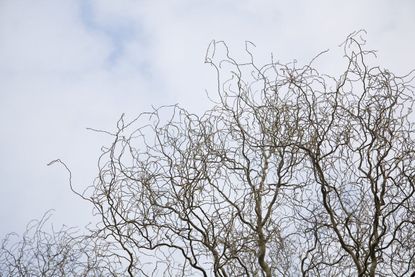

Also known as curly willow or tortured willow, corkscrew willow (Salix matsudana 'Tortusa') is easy to identify by its long, graceful leaves and curly, contorted branches, which become especially noticeable during the winter.
Unfortunately, although corkscrew willow is a fast-growing tree, it isn’t long lived and tends to be susceptible to breakage and insect problems. In spite of its downfalls, growing a curly willow tree is a worthy endeavor, and with proper care, you’ll enjoy this fascinating tree for several years. Keep reading and learn more about how to grow corkscrew willow trees.
Curly Willow Growing Conditions
Before growing this tree, you should know where to plant curly willow. Corkscrew willow is suitable for growing in USDA plant hardiness zones 4 through 8. The tree develops a short root system that remains near the surface of the soil, so it should be planted a safe distance from buildings, driveways, sidewalks, and sewer lines.
Plant curly willow anytime during spring or summer. Curly willow isn’t fussy about soil and adapts to clay, loam, or sand. Similarly, it tolerates either sun or partial shade. However, ideal conditions for this tree are well-drained, moist soil and full sunlight.
Corkscrew Willow Care
For the most part, corkscrew willow care is minimal, but the tree likes moisture. Water regularly during the first year, then water generously during periods of hot, dry weather. A 2 to 3 inch (5-8 cm.) layer of mulch will help keep the soil moist, helps keep weeds in check, and protect the trunk from damage by weed trimmers and lawnmowers.
However, leave a few inches (8 cm.) of bare ground around the base of the tree, as mulch that piles up against the trunk can attract a variety of pests. Corkscrew willow generally requires no fertilizer, but if growth appears weak, you can apply a cup of balanced dry fertilizer around the tree every spring, then water deeply.
If your tree is near a fertilized lawn, it probably already receives adequate nutrients. Prune corkscrew willow regularly to allow air and sunlight to enter the center of the tree, as a healthier tree free of damaged or dead branches is less prone to insect damage.
Gardening tips, videos, info and more delivered right to your inbox!
Sign up for the Gardening Know How newsletter today and receive a free download of our most popular eBook "How to Grow Delicious Tomatoes."
However, problems to watch for include pests such as aphids, borers, gypsy moths, and willow beetles. The tree is relatively disease-resistant, although it is susceptible to powdery mildew and leaf spot. The diseases tend to be relatively mild and usually don’t require treatment.

A Credentialed Garden Writer, Mary H. Dyer was with Gardening Know How in the very beginning, publishing articles as early as 2007.
-
 "My Worst Mistake" – Gardeners Share 10 Hard-Learned Lessons
"My Worst Mistake" – Gardeners Share 10 Hard-Learned LessonsGardeners never stop learning, and sometimes our mistakes are the best teachers. But why not save time and heartache by learning from other gardeners' failures?
By Melanie Griffiths
-
 Crops for Urban Growing: 8 Edible Plants For Urban Gardens
Crops for Urban Growing: 8 Edible Plants For Urban GardensUrban edible gardening lets your yard do double duty of beauty and practicality. Have fun combining edible plants with ornamentals.
By Teo Spengler
-
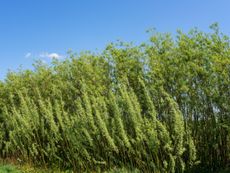 Living Willow Fence Ideas - Tips For Growing A Living Willow Fence
Living Willow Fence Ideas - Tips For Growing A Living Willow FenceCreating a living willow fence is an easy, inexpensive way to screen a view or divide garden areas. Read on to learn more.
By Susan Albert
-
 What’s Wrong With My Dappled Willow: Common Dappled Willow Problems
What’s Wrong With My Dappled Willow: Common Dappled Willow ProblemsDappled willow is one of the smaller members of the willow family. Although undemanding, it will occasionally see problems. Learn about them here.
By Teo Spengler
-
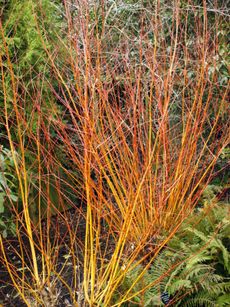 Coral Bark Willow Care – What Is A Coral Bark Willow Tree
Coral Bark Willow Care – What Is A Coral Bark Willow TreeFor lovely winter interest and nice summer foliage, you can’t go wrong with coral bark willow shrubs. Click here for tips on coral bark willow care.
By Teo Spengler
-
Peachleaf Willow Facts – Peachleaf Willow Identification And More
Few trees are easier to grow than native willows. Peachleaf willow trees are no exception. It’s not hard to identify peachleaf willows since they have leaves that look similar to the foliage of peach trees. Click here for peachleaf willow facts that describe this native tree.
By Teo Spengler
-
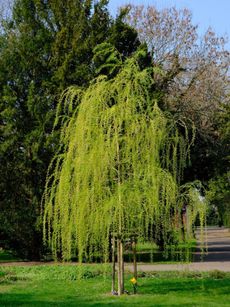 Willow Varieties – Types Of Willow Trees To Grow In The Landscape
Willow Varieties – Types Of Willow Trees To Grow In The LandscapeIf you are curious about which willow varieties might work well in your yard or garden, you’ll need to start by figuring out how much room you have and what growing conditions you can offer. Click here for an overview of popular varieties of willows.
By Teo Spengler
-
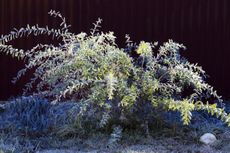 Pruning A Dappled Willow – How To Prune Dappled Willow Shrubs
Pruning A Dappled Willow – How To Prune Dappled Willow ShrubsThe dappled willow is a popular ornamental tree with a graceful weeping habit. Since this tree grows quickly, pruning a dappled willow is always an important part of the maintenance. Click here for information on dappled willow pruning.
By Teo Spengler
-
 Japanese Willow Pruning – How To Cut Back A Japanese Willow Tree
Japanese Willow Pruning – How To Cut Back A Japanese Willow TreeLike most willows, Japanese willow trees grow extremely fast. Trimming Japanese willows is a chore you may have to do several times a year to keep the shape and size in check. Click this article to learn how to prune Japanese willows.
By Darcy Larum
-
 What Are Willow Galls: Learn About Galls On Willow Trees
What Are Willow Galls: Learn About Galls On Willow TreesWillow tree galls are unusual growths that appear on willow trees. You may see different varieties on leaves, shoots, and roots. The galls are caused by sawflies and other pests as well as bacteria and can look quite different depending on the pest causing them. Learn more here.
By Teo Spengler